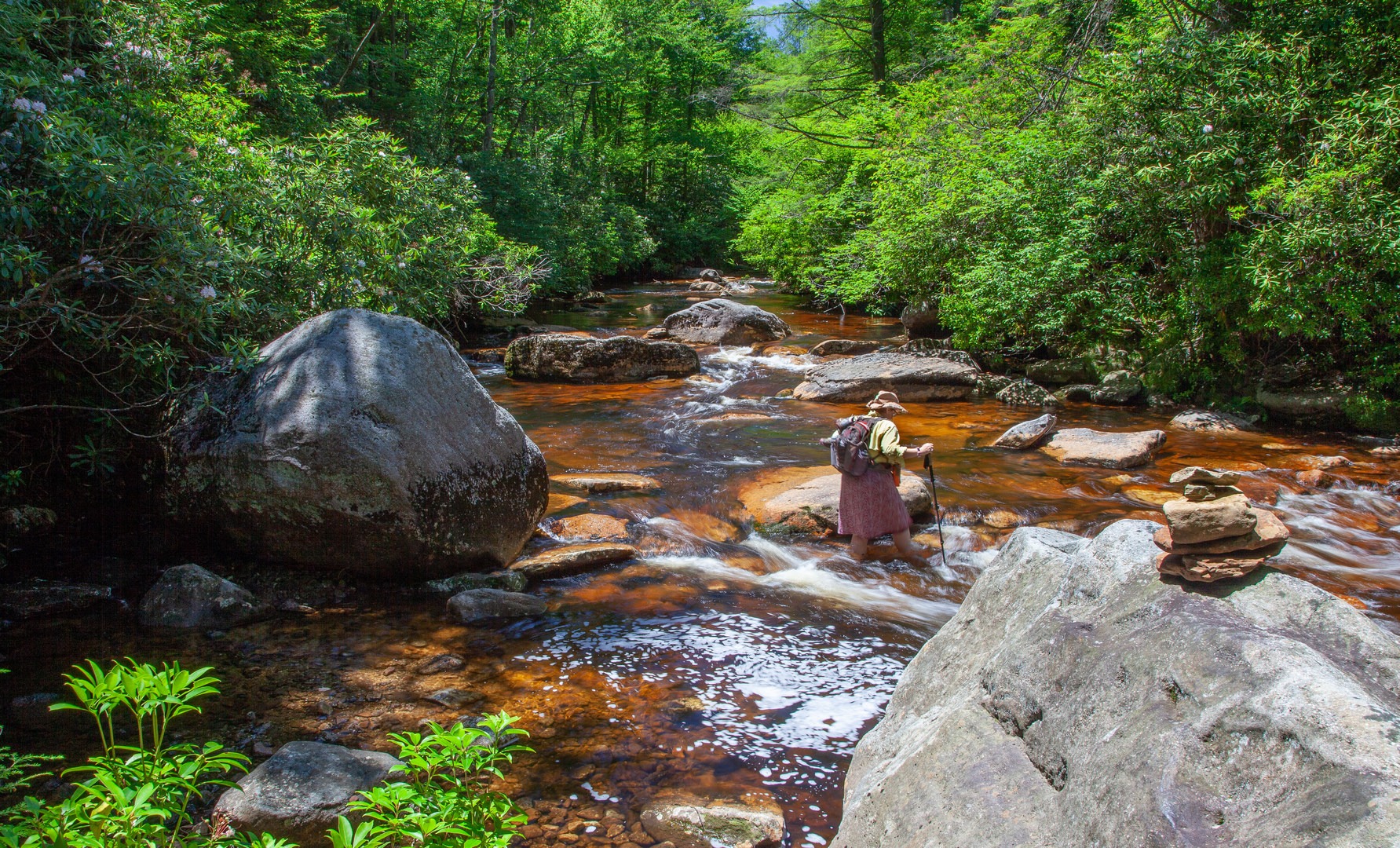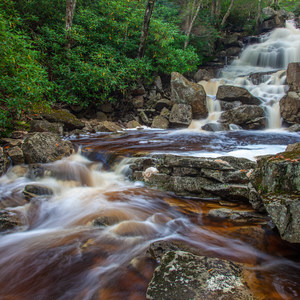If you tire of hiking with the crowds in the Dolly Sods Wilderness, consider Otter Creek Wilderness as an alternative that sits just 10 miles west as the crow flies. Yes, Dolly Sods has eye-popping cliff top views and open heath bogs, but Otter Creek is no less stunning in its own mellow way. The tumbling Otter Creek is equally as pretty as Red Creek in Dolly Sods. Otter Creek forests consist of mature second-growth trees and are more “open” compared to the stunted and less mature second-growth forests of Dolly Sods. Most importantly, Otter Creek is not overrun with hikers the way Dolly Sods is. This hike will introduce you to the subtle and distinctive beauty of the southern section of Otter Creek Wilderness.
Shaver and McGowan Mountains bound Otter Creek on the east and west. This hike takes you from the depths of the valley to the top of Shavers Mountain on the east wilderness boundary, through bogs and mixed forest interspersed with spruce, rhododendron thickets, and along the upper Otter Creek itself, sometimes meandering through flat wetlands, other times tumbling over shallow cascades.
The Otter Creek area was completely clearcut by 1914. In 1917, the federal government started purchasing the devastated lands in the current Monongahela National Forest to help restore the watersheds in the area. The mature second-growth forest was protected as a wilderness in 1975. The Otter Creek Wilderness is West Virginia’s second largest wilderness, and it has 42 miles of established trails. Numerous day hikes and backpacking options exist. Its size and relative remoteness give it one of West Virginia’s most robust black bear populations. Standard black bear precautions are required. Both Dolly Sods and Otter Creek Wildernesses lie on the transition zone of northern and southern eco-zones, creating a rich diversity of flora and fauna.
This is a moderate 9.1-mile hike. The trails are maintained to wilderness standards, so they can be rough, require knee-deep river crossings in normal weather, and are often wet and muddy. In heavy weather, Otter Creek can rise fast and be dangerous to ford, so pay attention to the weather.
To enjoy this introductory hike to the Otter Creek Wilderness, start at the southern terminus of the 11-mile Otter Creek Trail at the end of FS Road 303. Walk around the gate at the gravel road. Go about 50 yards and take a hard right onto Hedrick Camp Trail (FS165). Cross Otter Creek on a makeshift, wobbly log bridge that is somtimes submerged due to beaver activity. Continue up the trail through the rhododendron thickets that transition to a mixed hardwood forest. Hedrick Camp Trail ends after about a mile, and Shaver Mountain Trail (FS 129) enters from the right. Continue straight to merge onto the Shaver Mountain Trail that is fainter and not blazed, so it can be hard to follow. Pay attention. Shaver Mountain Trail crests the long, wide ridgeline that forms Shaver Mountain. Follow it, and enjoy the open, mature second-growth and diverse ground cover of a mature forest. Though there are hints of grand vistas to the east (hikers right), the lack of rocky outcrops prevents any grand views into the Glady River Valley. You’ll be on Shaver Mountain Trail for about 4.3 miles when it intercepts Mylius Trail (FS128). Go west (hikers left) and start the descent along Mylius Run until you run into and have to cross Otter Creek. At normal water levels, it is a knee-deep wade. Be careful in high water, or turn around and retrace your path. After the crossing you will intercept the Otter Creek Trail (FS131). Go south (hikers left), and in 3.1 miles you will be back at the trailhead with no more major river crossings. Otter Creek Trail is generally level and often wide, but the water from the numerous seeps and side-creeks make it wet and rutted. While walking Otter Creek Trail, you can see a few remains of the old logging railroad the trail closely follows.



























Comments
Sign In and share them.